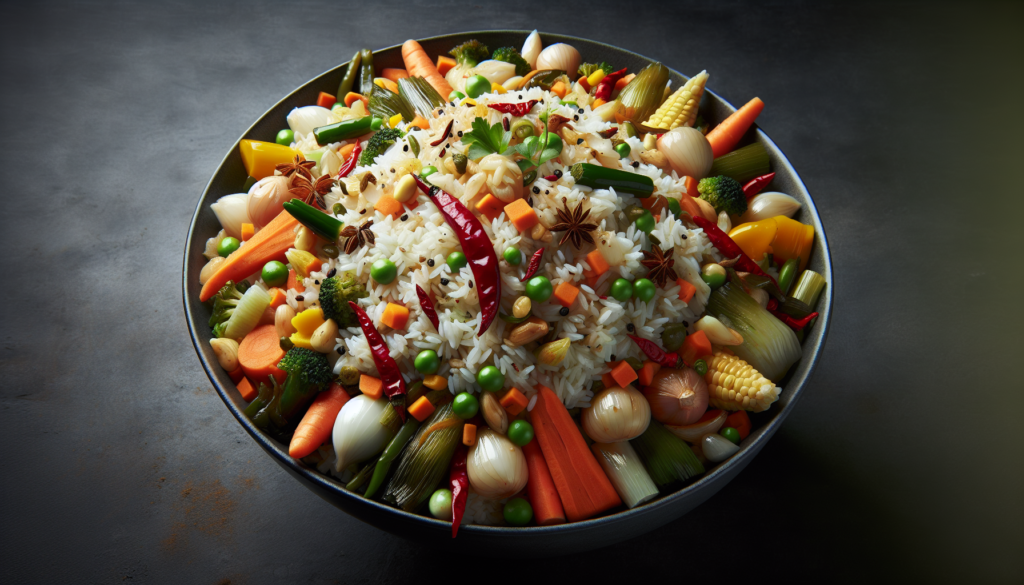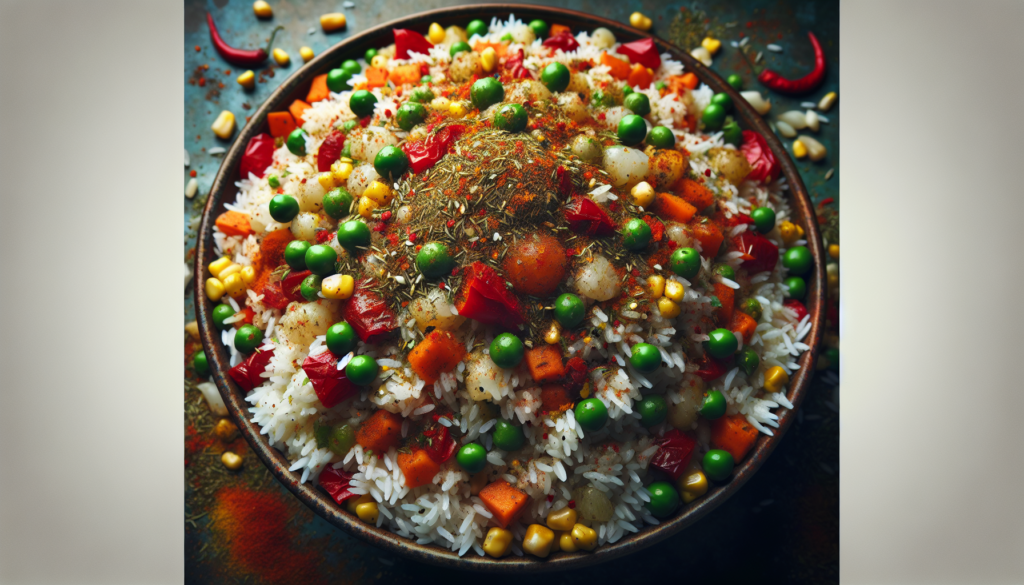Do you find yourself hosting a dinner party for 8 adults and wondering how much rice you should prepare? Well, fret not because we have got you covered! In this article, we will provide you with a simple and straightforward guide on calculating the perfect amount of rice needed to satisfy the appetites of your guests. Whether you are a seasoned cook or a novice in the kitchen, our tips will ensure that you serve up just the right amount of this beloved staple for an enjoyable and satisfying meal. So, let’s get started on this rice-cooking adventure!

Calculating Rice Quantity
Determining Rice Servings per Person
When determining the amount of rice you need to cook for a meal, it’s essential to consider the number of servings per person. On average, a standard serving of cooked rice is about 1/2 cup. However, keep in mind that individual appetites may vary, so it’s always a good idea to provide a little extra to ensure everyone is satisfied.
Considering Appetite and Portion Size
To accurately calculate the rice quantity, you should consider the appetite and portion size of the individuals you are serving. Some people have larger appetites and may need more rice to feel satisfied. It’s helpful to know your guests’ preferences and adjust the quantities accordingly. If you’re unsure, it’s always better to have a bit more rice than not enough.
Accounting for Leftovers
When planning the rice quantity, it’s also essential to consider the possibility of leftovers. Rice can be easily stored and used for future meals, so it’s better to err on the side of caution and make a bit extra. Leftover rice can be transformed into delicious fried rice or added to soups, salads, and various dishes. Plus, it saves you time and effort in the kitchen for future meals.
Factors to Consider
Types of Rice
The type of rice you choose to cook will impact the quantity needed. Different types of rice have varying densities and cook times. For example, long-grain rice tends to be more fluffy and requires more water per cup, while short-grain rice is stickier and requires less water. Consider the specific type of rice you are using when calculating the quantity needed.
Cooking Method
The cooking method can also affect the quantity of rice you need. Different cooking methods, such as stovetop, rice cooker, or Instant Pot, may require different amounts of water and adjust the cooking time. Be sure to follow the instructions for your chosen cooking method and make any necessary adjustments to the rice quantity accordingly.
Additional Ingredients
If you plan to add ingredients such as vegetables, meat, or spices to your rice dish, you may need to adjust the rice quantity accordingly. These additional ingredients can affect the overall volume of the dish, so it’s important to account for them when calculating the necessary amount of rice. Consider both the cooked volume of the added ingredients and how they will impact the overall taste and texture of the dish.
Serving Suggestions
Accompaniments
Rice pairs well with a variety of accompaniments that can enhance the flavors and complete the meal. Consider serving your rice with dishes such as stir-fried vegetables, curries, grilled meats, or stews. These accompaniments not only add a burst of flavor but can also help stretch the rice further by creating a well-balanced and satisfying meal.
Beverage Options
When serving rice, it’s important to consider the beverage options that will complement the flavors and complete the dining experience. Traditional choices include water, iced tea, or lemonade. For those looking for a more adventurous option, consider pairing rice with wines like Riesling or Sauvignon Blanc. Remember to take into account your guests’ preferences and any dietary restrictions they may have.

Rice Cooking Tips
Measuring Rice and Water
Accurate measurement of rice and water is crucial for achieving perfectly cooked rice. As a general rule, the ratio of rice to water is usually 1:2, meaning one cup of rice requires two cups of water. However, some rice varieties may require slightly different ratios, so always check the specific instructions on the packaging. Using a measuring cup for both rice and water ensures consistent results every time.
Cooking Time
The cooking time for rice can vary depending on the type of rice and the cooking method used. It’s crucial to follow the recommended cooking time provided on the packaging or the recipe you are following. Overcooking or undercooking rice can greatly impact its texture and taste. Rice that is cooked for too long may become mushy, while undercooked rice can be unpleasantly hard and crunchy.
Fluffing the Rice
Once your rice is cooked to perfection, it’s essential to fluff it properly before serving. This involves gently stirring the rice with a fork or a rice paddle to separate the grains and prevent clumping. Fluffing the rice not only improves the overall texture but also allows it to cool slightly, making it easier to handle and enjoy.
Cooking Rice in Bulk
Scaling Up the Recipe
If you need to cook rice for a larger group, it’s important to scale up the recipe accordingly. Start by determining the number of servings required for the total number of people you are serving. Then, multiply the quantities of rice and water by the same factor to maintain the appropriate ratio. Pay attention to your cooking vessel’s capacity and make sure it can accommodate the increased quantity.
Equipment Requirements
When cooking rice in bulk, having the right equipment can make the process much more manageable. Large-capacity rice cookers or stockpots are ideal for cooking larger quantities without sacrificing quality. Ensure that your chosen cooking vessel provides even heat distribution and is large enough to prevent overflow. Investing in the right equipment will help you achieve consistent and delicious results.
Alternate Rice Formulations
Fried Rice
Fried rice is a versatile and delicious way to use leftover rice and transform it into a completely new dish. By adding various ingredients such as vegetables, meat, eggs, and soy sauce, you can create a flavorful and satisfying meal. When making fried rice, it’s important to adjust the quantity of rice based on your desired ratio of rice to other ingredients, aiming for a well-balanced and tasty result.
Rice Pilaf
Rice pilaf is a dish where rice is sautéed in oil or butter before being cooked with broth or stock. It’s a fantastic way to elevate the flavors of rice and add depth to your meals. Similar to fried rice, adjusting the quantities of rice and other ingredients will depend on your desired ratio and the flavors you want to achieve. Rice pilaf can be served as a side dish or as a base for various proteins and vegetables.
Special Dietary Considerations
Gluten-Free Options
Rice is naturally gluten-free, making it an excellent choice for individuals who follow a gluten-free diet. Whether you have gluten intolerance or celiac disease, rice can be a staple grain that provides a variety of options for gluten-free meals. Just ensure that any additional ingredients or seasonings used in your rice dishes are also free from gluten.
Vegan or Vegetarian Variations
Rice is a versatile staple that can easily be adapted to vegan or vegetarian dietary preferences. By incorporating plant-based ingredients such as vegetables, tofu, tempeh, or legumes, you can create delicious and nutritious vegan or vegetarian rice dishes. Experimenting with different flavors and seasonings can open up a world of possibilities for plant-based meals centered around rice.
Rice Storage and Leftovers
Proper Storage Techniques
Leftover rice should be stored properly to maintain its quality and prevent the growth of harmful bacteria. Allow the cooked rice to cool completely before transferring it to an airtight container or resealable bags. Refrigerate the rice as soon as possible and consume it within 2-3 days. If you have a large quantity of leftover rice, consider dividing it into smaller portions to facilitate faster cooling and easier storage.
Reheating Leftover Rice
When reheating leftover rice, it’s crucial to do so safely to avoid any foodborne illnesses. One commonly recommended way is to use a microwave: sprinkle some water over the rice to add moisture and cover it partially with a microwave-safe lid or microwave-safe film. Heat in short intervals, stirring occasionally until the desired temperature is reached. Alternatively, you can reheat the rice in a skillet with a small amount of oil or water, stirring constantly until it’s heated through.
Calculating Rice Quantity for Larger Groups
Determining Portions for Various Group Sizes
To calculate the rice quantity for larger groups, you need to determine the number of servings required. Start by knowing the portion size per person and then multiply it by the number of guests. For example, if you are serving 20 people and each person requires a 1/2 cup serving, you will need 10 cups of cooked rice. Adjust the quantity based on your guests’ appetite and preferences.
Adjusting Quantity for Different Occasions
It’s worth considering that the quantity of rice needed may vary depending on the occasion. For casual events or buffets, where guests may help themselves to a larger portion or take seconds, it’s wise to increase the rice quantity to accommodate their appetites. On the other hand, for more formal or plated meals, where portions are typically controlled, you may need slightly less rice. Tailor the rice quantity to suit the specific occasion and the guests you are serving.
Budget-Friendly Rice Options
Cost-Effective Rice Varieties
Rice is a cost-effective staple that can be an excellent addition to budget meals. There are various rice varieties to choose from, each with its own price range. Generally, white rice is more affordable compared to specialty or imported varieties. Additionally, purchasing rice in bulk or larger quantities can often lead to cost savings. Consider your budget and explore different rice options to find the most affordable choice for your needs.
Using Rice as a Staple in Budget Meals
Rice can serve as a versatile and filling component of budget-friendly meals. By combining rice with affordable ingredients such as beans, vegetables, and affordable proteins like eggs or tofu, you can create wholesome and satisfying meals without breaking the bank. Rice can stretch your budget and provide a solid foundation for meals that are both economical and nutritious.
In conclusion, calculating the rice quantity for your meals involves considering factors such as servings per person, appetite, portion size, leftovers, rice type, cooking method, additional ingredients, and dietary considerations. By keeping all these elements in mind, you can ensure that you provide enough rice to satisfy your guests while also considering their preferences and dietary needs. With careful planning and the right cooking techniques, you can create delicious rice dishes that are tailored to any occasion, accommodating both larger groups and individual budgets. Happy cooking!



